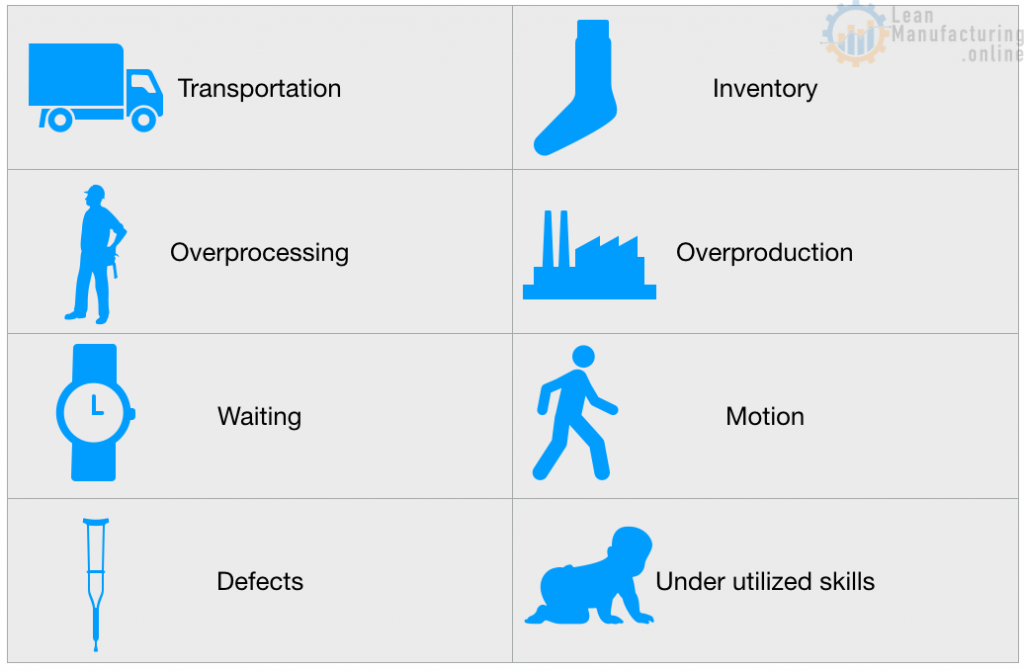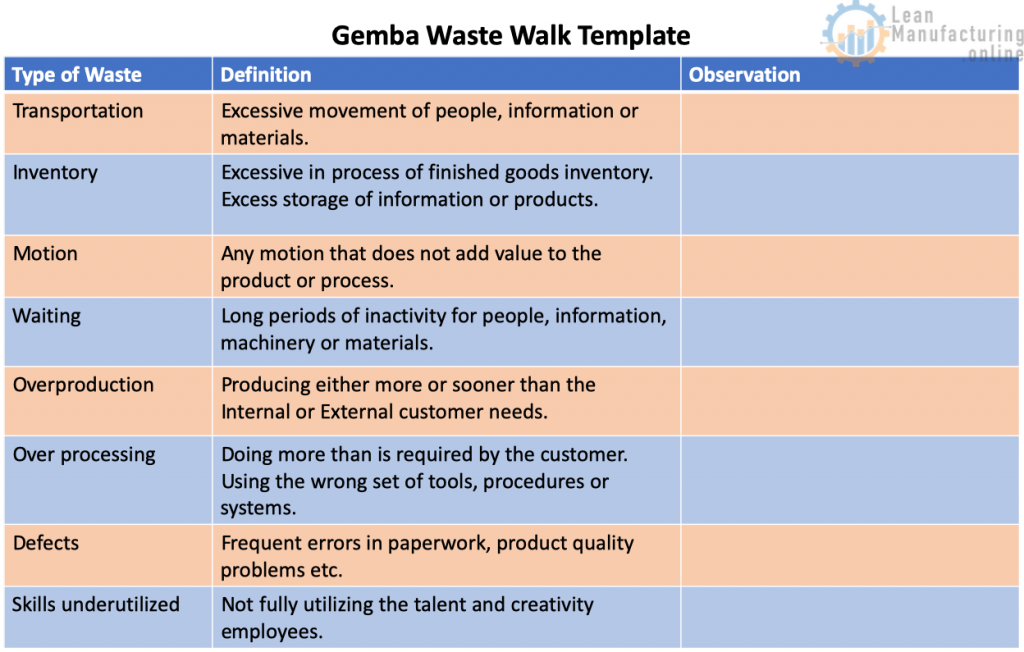The lean methodology defines 8 forms of waste:
- Transportation
- Inventory
- Over-processing
- Overproduction
- Waiting
- Motion
- Defects
- Underutilized skills

Transportation waste
Movement of material, paper, etc. that adds unnecessary time to the flow, increasing the risk of being lost, placed in the wrong location during transportation.
Inventory waste
Packaging or finished goods inventory requires extra storage space and handling, raw materials are not being processed.
Over-processing waste
Unnecessary steps in the process, increasing the risk of delivering a product to the customer, could’ve been combined with other steps.
Overproduction waste
Finished goods are ready before customer needs them, occupying resources and considered one of the worst losses.
Waiting waste
Failures of upstream process, creating idle time in the current step, causing issues with the downstream process.
Motion waste
Excessive turning, lifting, walking – all unnecessary motions that increase process time.
Defects waste
Rework generated due to damaged packaging, bad date code, or best before on finished goods, a product that was put on hold due to quality issues, resulting in lost sales or hidden costs.
Underutilized skills waste
Shop floor talent that is not used properly, causing lower employee morale, drive, and creativity.
Gemba Waste Walk Template
We just talked about 8 sources of waste. Would you like to identify these at your manufacturing facility? Use our template while walking all areas, observe and note so it can be analyzed and actioned later on.
The template can be downloaded here.

















